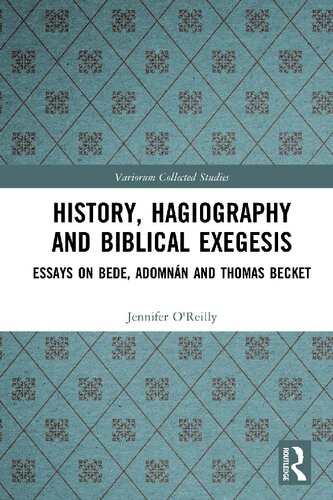

Most ebook files are in PDF format, so you can easily read them using various software such as Foxit Reader or directly on the Google Chrome browser.
Some ebook files are released by publishers in other formats such as .awz, .mobi, .epub, .fb2, etc. You may need to install specific software to read these formats on mobile/PC, such as Calibre.
Please read the tutorial at this link: https://ebookbell.com/faq
We offer FREE conversion to the popular formats you request; however, this may take some time. Therefore, right after payment, please email us, and we will try to provide the service as quickly as possible.
For some exceptional file formats or broken links (if any), please refrain from opening any disputes. Instead, email us first, and we will try to assist within a maximum of 6 hours.
EbookBell Team

0.0
0 reviewsWhen she died in 2016, Dr Jennifer O’Reilly left behind a body of published and unpublished work in three areas of medieval studies: the iconography of the Gospel Books produced in early medieval Ireland and Anglo-Saxon England; the writings of Bede and his older Irish contemporary, Adomnán of Iona; and the early lives of Thomas Becket. In these three areas she explored the connections between historical texts, artistic images and biblical exegesis.
This volume is a collection of 16 essays, old and new, relating history and exegesis in the writings of Bede and Adomnán, and in the lives of Thomas Becket. The first part consists of seven studies of Bede’s writings, notably his biblical commentaries and his Ecclesiastical History. Two of the essays are published here for the first time. The five studies in the second part, devoted to Adomnán, discuss his life of Saint Columba (the Vita Columbae) and his guide to the Holy Places (De locis sanctis). One essay (‘The Bible as Map’), published posthumously, compares his presentation of a major theme, the earthly and heavenly Jerusalem, with the approach adopted by Bede. The third section consists of two essays on the lives of Thomas Becket that were composed shortly after his death. They examine, in the context of patristic exegesis, the biblical images invoked in the texts in order to show how the saint’s biographers understood the complex relationship between hagiography and history. With the exception of the Jarrow Lecture on Bede and the essays on Becket, the studies in both parts were published originally in edited books, some of them now hard to come by.